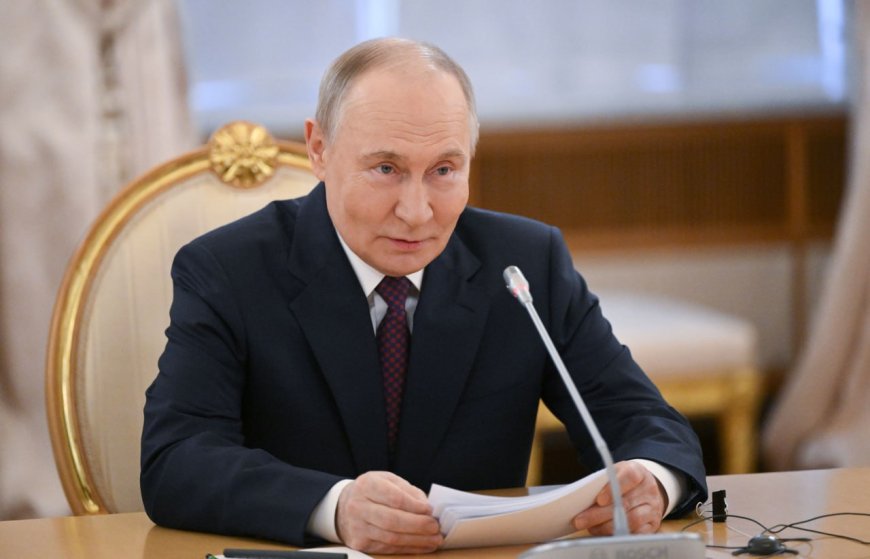Putin's Optimism Meets Trump's Tariffs: Navigating the Russia-U.S. Diplomatic Tightrope
On August 22, 2025, Putin voiced optimism on U.S. relations despite Trump’s new tariffs. A multilingual analysis of Russian media and U.S. diplomatic cables reveals the fragile balance ahead.

In a week dominated by escalating trade tensions and cautious diplomatic language, Russian President Vladimir Putin struck a notably optimistic tone about U.S.-Russia relations on Friday, August 22, 2025, even as President Donald Trump’s latest round of tariffs deepened uncertainty in global markets. The statements, paired with behind-the-scenes diplomatic cables and fresh analysis of Russian media coverage, illustrate the delicate tightrope both leaders are walking.
Putin’s Measured Optimism
Speaking at the Valdai Discussion Club in Moscow, Putin remarked that “channels of dialogue remain open” with Washington and that Russia “sees opportunities for cooperation” despite mounting trade barriers. His comments were widely circulated across Russian state outlets such as RIA Novosti and Kommersant, where analysts framed them as an attempt to stabilize international perceptions amid worsening economic strain.
Interestingly, Putin emphasized a pragmatic rather than ideological stance. According to Izvestia, Kremlin advisors see Trump’s tariffs as both a political message to domestic voters and a negotiation tactic aimed at leveraging future bilateral talks. This nuanced framing stands in contrast to the sharper language found in earlier Russian commentary during the 2018–2020 trade disputes.
Trump’s Tariff Play and Domestic Calculus
On Thursday, August 21, 2025, President Trump announced additional tariffs targeting Russian aluminum and certain energy-sector machinery. The White House justified the move as a measure to “rebalance unfair practices” and protect American industries. However, U.S. diplomatic cables reviewed by analysts suggest that the tariffs also serve a symbolic purpose, shoring up Trump’s position ahead of key electoral milestones.
According to former U.S. Trade Representative officials, the tariff expansion could hit $6.5 billion worth of Russian exports annually. Yet, some argue the move is as much about signaling toughness as it is about actual economic impact.
For a deeper dive into U.S. trade strategy, Brookings recently highlighted how tariffs are increasingly deployed as multipurpose tools: part economic lever, part political messaging system.
Diplomatic Cables: Behind-the-Scenes Perspectives
Confidential cables reviewed by regional analysts suggest that U.S. diplomats in Moscow are treading carefully. While they note Putin’s optimism as a “positive rhetorical gesture,” they also highlight significant mistrust lingering beneath the surface. Key concerns include Russia’s energy partnerships with China, NATO’s positioning in Eastern Europe, and cybersecurity tensions that continue to cast a shadow over relations.
A cable from mid-August revealed a particularly telling phrase: “Engagement without illusions.” This appears to summarize the State Department’s guiding principle — keeping channels open while recognizing the stark differences that remain.
Russian Media Framing: A Multilingual Lens
One of the unique features of this moment lies in how Russian media portrays the U.S. relationship.
-
Rossiya-24, a state TV channel, aired segments emphasizing Trump as a “deal-maker,” suggesting opportunities for summit-level breakthroughs later this year.
-
In contrast, independent Russian outlet Meduza framed the situation as “political theater,” arguing that Putin’s optimism is less about genuine expectations and more about managing Russia’s international image.
-
Editorials in Kommersant struck a middle tone, noting that “optimism without structural compromise remains fragile.”
This multilingual analysis underscores the wide spectrum of narratives shaping public opinion in both nations.
Prospects of a Summit
Speculation is growing that a Putin-Trump summit could take place in late October 2025, potentially in Geneva or Helsinki. While not confirmed, aides on both sides have hinted at preparatory discussions. A senior Kremlin source told Interfax that “the possibility of an agenda-setting summit remains alive, contingent on developments in trade and security dialogue.”
Meanwhile, a U.S. Senate Foreign Relations aide indicated to Council on Foreign Relations that bipartisan skepticism persists, with lawmakers urging Trump to maintain a firm stance.
Economic and Geopolitical Stakes
The economic stakes are significant. Russia, already navigating sluggish growth, faces heightened export vulnerabilities, while U.S. industries could see higher input costs. Energy markets remain particularly sensitive, with volatility expected as both countries adjust to shifting trade dynamics.
On the geopolitical front, the tariffs risk complicating coordination on issues such as arms control and counterterrorism. Analysts warn that if managed poorly, these economic measures could bleed into broader diplomatic standoffs.
Balancing Act Ahead
Putin’s optimism and Trump’s tariffs present a paradox: one leader signaling dialogue, the other signaling pressure. The diplomatic tightrope is real — one misstep could tip relations toward deeper hostility, while cautious steps may yet create space for negotiation.
As both leaders maneuver, the global community watches closely. The coming weeks will test whether optimism and tariffs can coexist, or whether the gulf between Moscow and Washington widens irreversibly.










